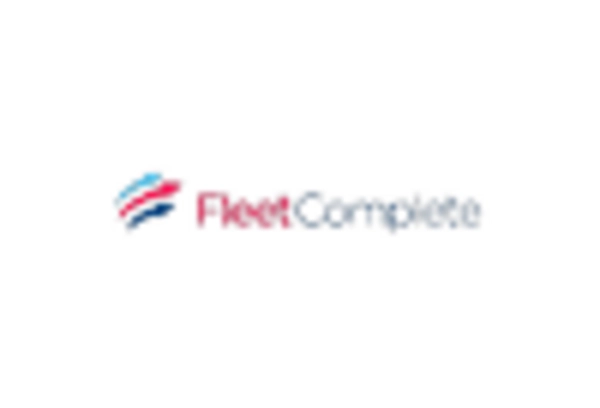Rising Concerns Over Vehicle Security
Concerns regarding vehicle security are escalating, significantly impacting the Vehicle Tracking System Market. With the increase in vehicle theft and unauthorized usage, consumers and businesses alike are seeking advanced tracking solutions to safeguard their assets. The market for vehicle tracking systems is projected to reach a valuation of over $10 billion by 2026, driven by the need for enhanced security features. These systems not only provide real-time location data but also enable remote immobilization of vehicles, which is becoming a critical feature for many users. Consequently, the emphasis on vehicle security is likely to continue driving growth in the Vehicle Tracking System Market.
Growth of E-commerce and Delivery Services
The growth of e-commerce and delivery services is significantly impacting the Vehicle Tracking System Market. As online shopping continues to rise, logistics and delivery companies are increasingly relying on vehicle tracking systems to enhance their service efficiency. The demand for timely deliveries and improved customer satisfaction is pushing these companies to adopt advanced tracking solutions. Recent statistics indicate that the logistics sector is expected to grow by 25% over the next few years, further driving the need for effective vehicle tracking systems. This trend is likely to create new opportunities within the Vehicle Tracking System Market, as businesses seek to optimize their delivery operations.
Increasing Demand for Fleet Management Solutions
The Vehicle Tracking System Market is experiencing a surge in demand for fleet management solutions. Companies are increasingly recognizing the value of real-time tracking to enhance operational efficiency and reduce costs. According to recent data, the fleet management segment is projected to grow at a compound annual growth rate of approximately 15% over the next five years. This growth is driven by the need for businesses to optimize routes, monitor driver behavior, and ensure compliance with regulations. As a result, the integration of vehicle tracking systems into fleet management is becoming a standard practice, thereby propelling the Vehicle Tracking System Market forward.
Government Regulations and Compliance Requirements
Government regulations and compliance requirements are increasingly influencing the Vehicle Tracking System Market. Many regions are implementing stricter regulations regarding vehicle emissions, safety standards, and driver behavior. As a response, businesses are adopting vehicle tracking systems to ensure compliance and avoid penalties. The market is expected to benefit from these regulatory frameworks, as companies seek to leverage tracking systems for reporting and compliance purposes. This trend is likely to drive a steady increase in demand for vehicle tracking solutions, with estimates suggesting a growth rate of around 12% annually in the Vehicle Tracking System Market.
Technological Advancements in GPS and Communication
Technological advancements in GPS and communication technologies are playing a pivotal role in shaping the Vehicle Tracking System Market. Innovations such as high-precision GPS, 5G connectivity, and cloud computing are enhancing the capabilities of tracking systems. These advancements allow for more accurate location data, faster communication, and improved data analytics. As a result, the market is witnessing a shift towards more sophisticated tracking solutions that offer enhanced features such as geofencing and real-time alerts. The integration of these technologies is expected to propel the Vehicle Tracking System Market, with projections indicating a potential market growth of 20% in the coming years.















Leave a Comment